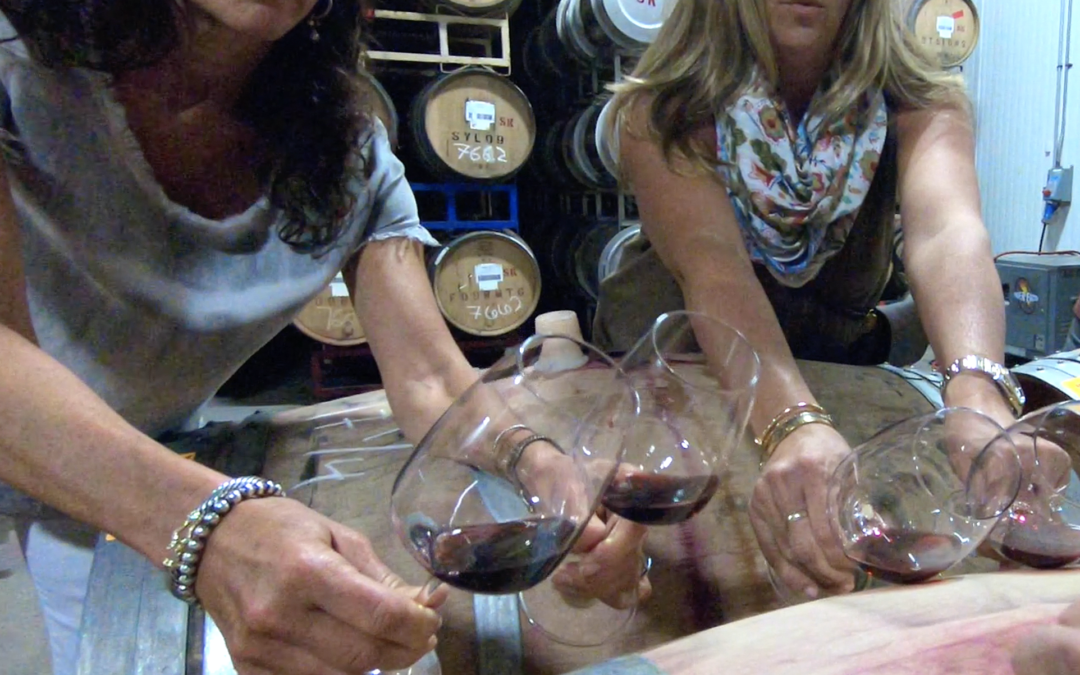
Jul 8, 2018 | Sonoma, Vineyard, Wine
Hydeout Sonoma has many wonderful clients. Our New York-based clients, owners of the Sovare label, came into town to taste their 2017 vintage. Sovare is an estate hillside vineyard near Sonoma Mountain comprising equal percentages of Cabernet, Sangiovese, and Zinfandel.
Hydeout Sonoma took over management of the vineyard in 2015. At that time the vineyard was not in good shape. After a lot of dedicated attention, this is the vineyard as of July 2018:
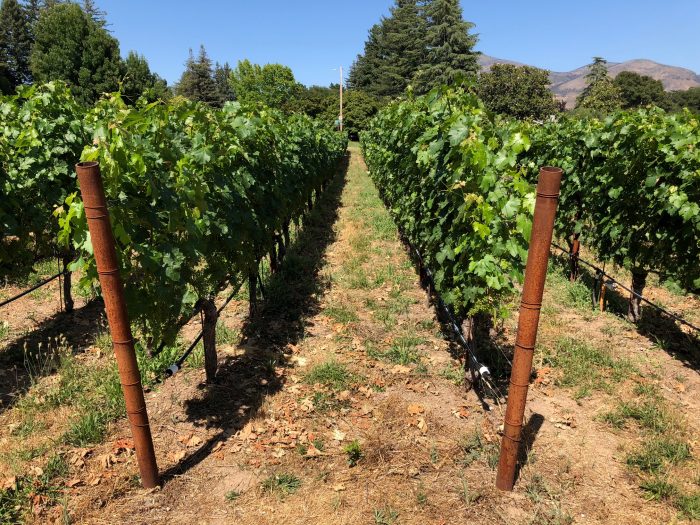
And here is a pictorial essay of Sovare’s visit to the Arcana Winery custom crush facility where Hydeout Sonoma makes the Sovare wine:
Using a wine thief, I am pulling equal sample volumes from these barrel and blending into wine glasses ‘on the fly.’
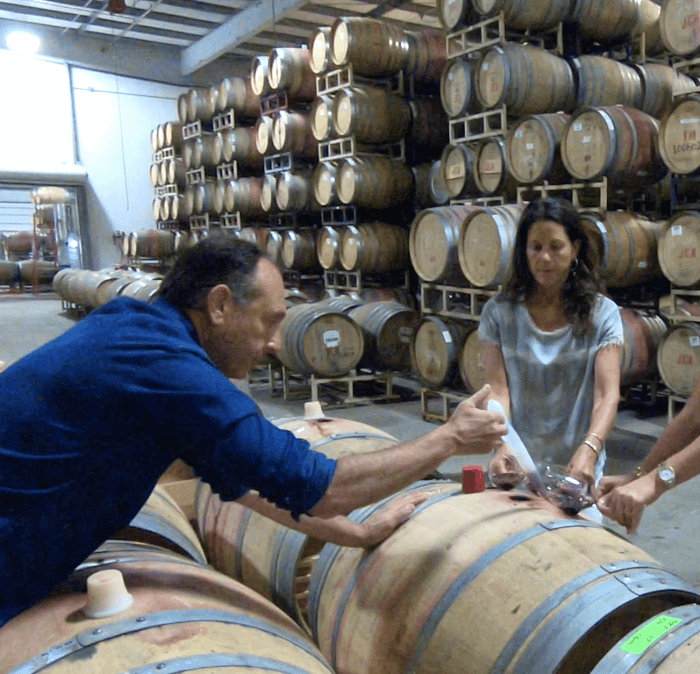
Almost ready with equal parts from several different barrels:
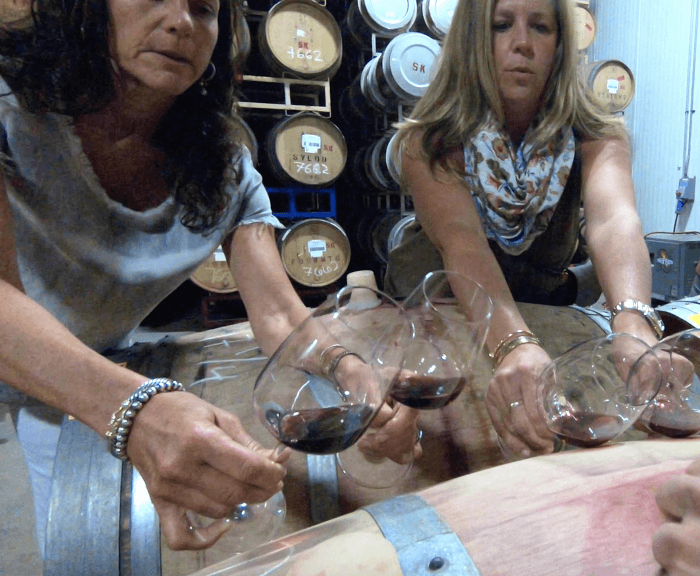
The moment of truth, tasting the 2017 vintage.
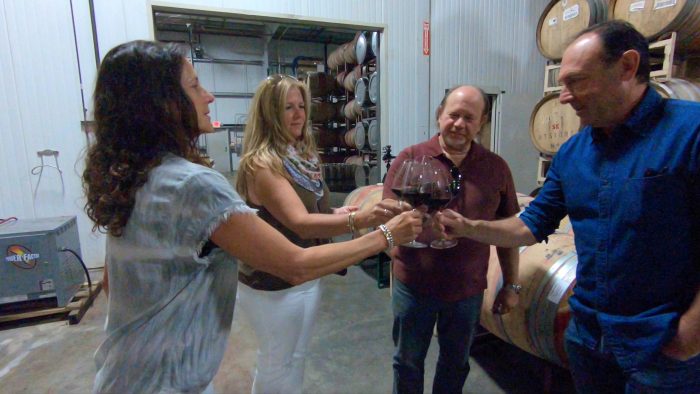
Discussion follows, how much more time in the barrel, in what way is the 2017different from 2016, what wood to use in 2018, and so on.
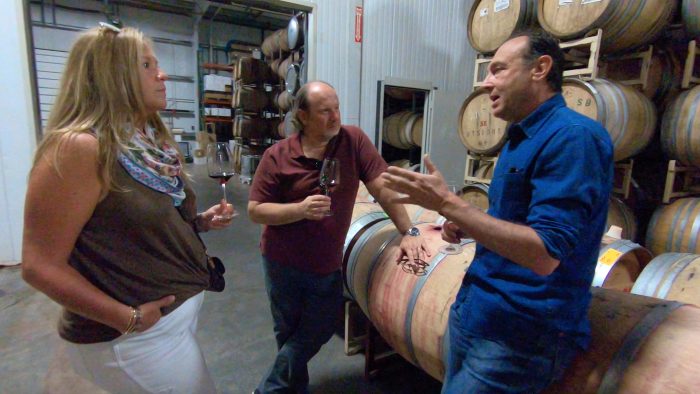
And more discussion…
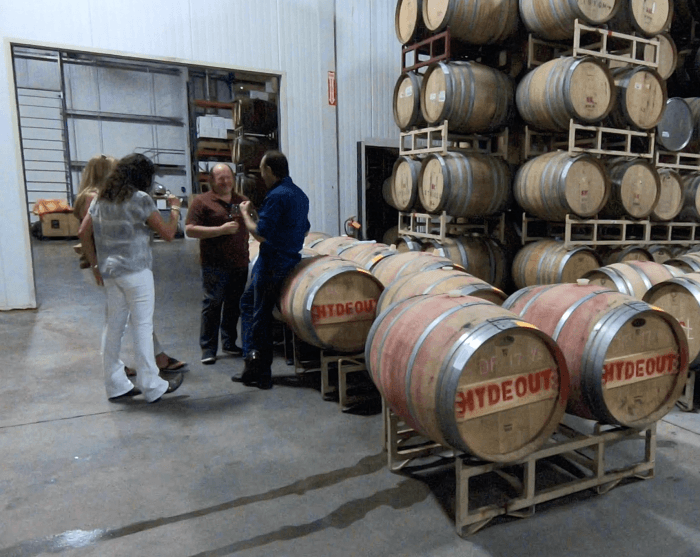
And more discussion…
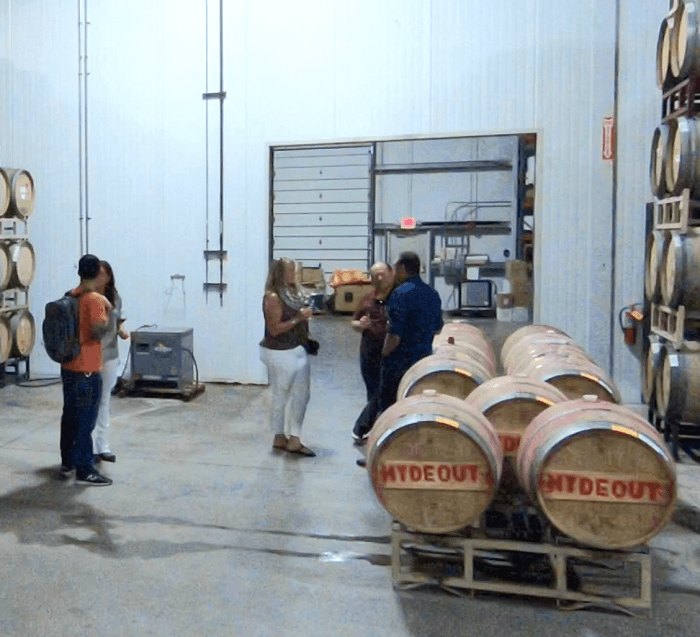
Having settled on the key next steps fro 2017 and 2018, now we need to decide where to go for lunch! We ended up at El Dorado Kitchen on the square for some al fresco dining.
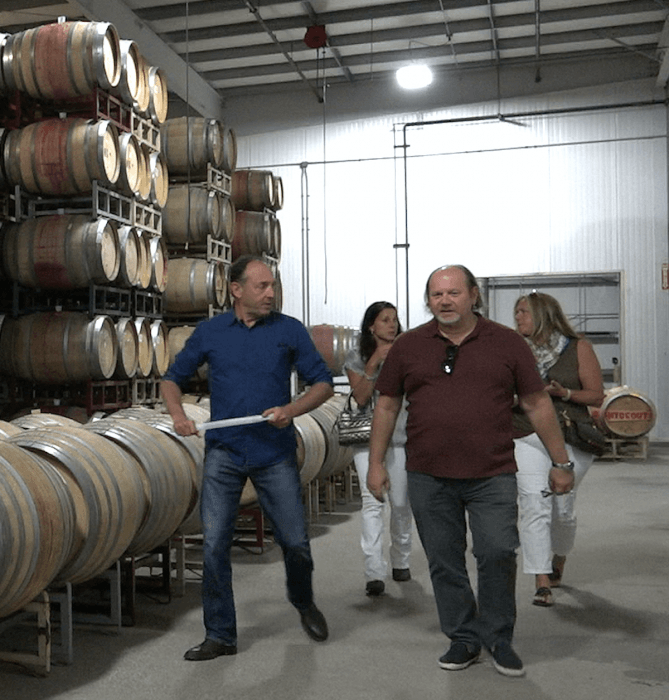
This is the first Sovare vintage, from 2016:
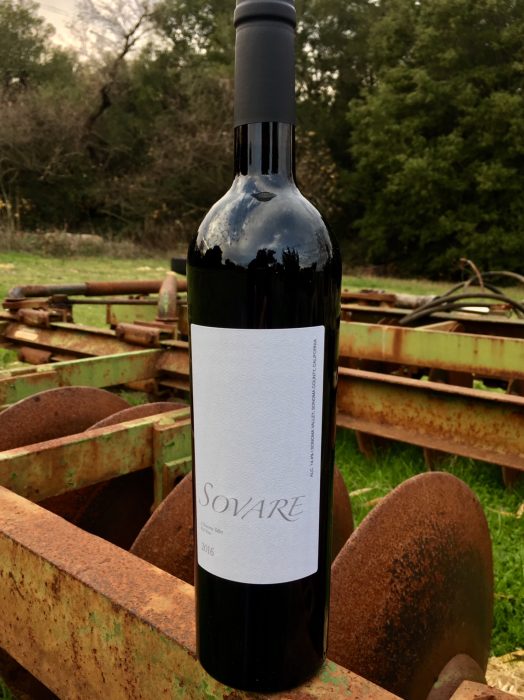
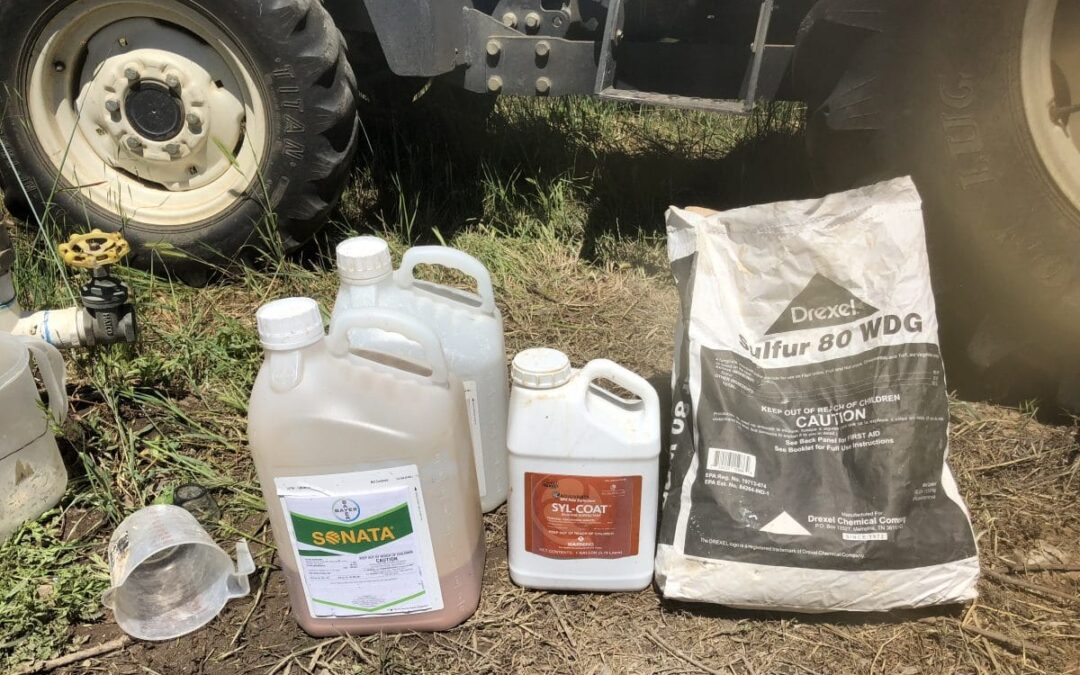
Jun 10, 2018 | Sonoma, Vineyard, Wine
Farming Sonoma vineyards organically is expensive and time consuming. And it makes the wine more expensive too. Why?
One of the biggest risks to vineyards around the globe is mold and mildew. Mildew spores over-winter in dormant cane buds and under bark. For season-long control, the vineyards must be sprayed. But with what?
Traditional farming deploys an array of chemicals to knock down mold and mildew. Examples include Tebuconazole, Triflumixole, and Quinoxyfen. To be effective, during the growing season chemicals like these will be sprayed on every inch of every grapevine roughly every 21 days.
Organic choices are more limited, and less effective, and sometimes more expensive too. And they must be applied every 10-14 days. Over the course of an entire growing season, that means 3-5 more trips through the vineyard with the driver, tractor, and sprayer, and nearly twice the total chemical cost. If you owned vineyards and you’re livelihood depended on growing and selling perfect grapes, which path would you choose?
At Hydeout Sonoma, we are sustainable always, and organic whenever possible. And our clients happily (or grudgingly) pay the extra costs – knowing their kids and pets can safely play in the vineyard and (the adults) can safely drink the wine.
In May, most grapes will look like this…
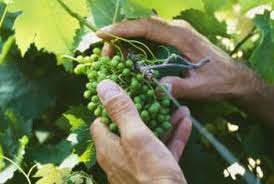
Those same grapes grapes will look like this by late summer…
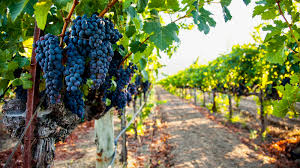
but left untreated, by Fall those grapes will look like this, ruined…
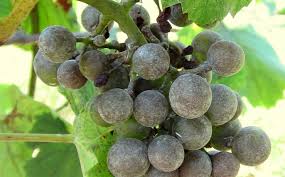
Mold and mildew must prevented early and all season (until the grapes start to color up or turn red, called verasion). Once you have it, no amount of irrigation or spraying will get you out of mildew trouble.
An uninformed person might drive past one of our organic spray programs and get pretty nervous hearing all the noise and seeing the chemical fog. This is what fully organic spraying can look like from a distance…
organic spray by tractor
And up close…
organic spray by tractor close up
This week, we are spraying a combination of 3 organic products, all approved by OMRI (Organic Materials Review Institute).
OMRI is a non-profit that supports organic integrity by developing clear information and guidance about materials, so that producers know which products are appropriate for organic operations.
https://www.omri.org
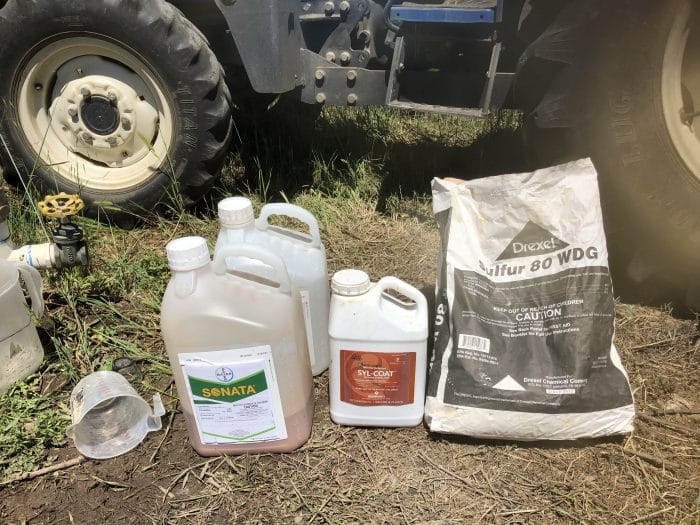
- Sulfur 80: it’s just like what it sounds, basically naturally occurring sulfur in mineral form all crushed up, and then pulverized so that it will go into dispersable suspension with water,
- Sonata: is a bio-fungicide with live bacteria spores that induce plants’ natural defenses to resist disease development and anti-fungal compounds that have contact fungicidal activity.
- Syl-coat: is a nonionic surfactant which has been specifically designed to enhance the efficacy of pesticides. It is particularly effective when used with water-soluble mildewcides.
Along with managing organic pesticides, vineyard irrigation management is an equal challenge. Here is one sample image of how I manage our client’s vineyard irrigation from my cell phone.
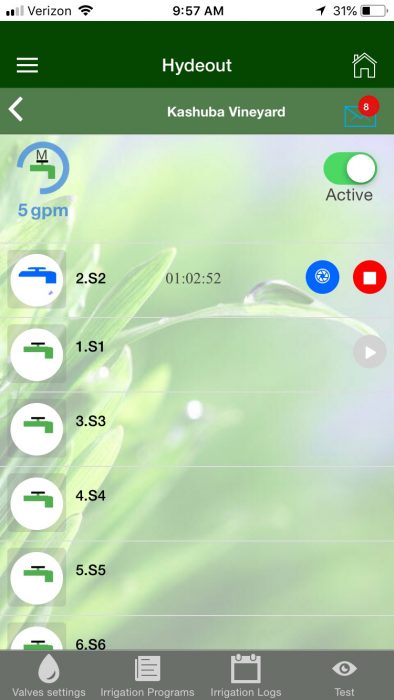
See more Hydeout Sonoma blog entries at: https://www.hydeoutsonoma.com/welcome-to-the-hydeout-sonoma-blog/
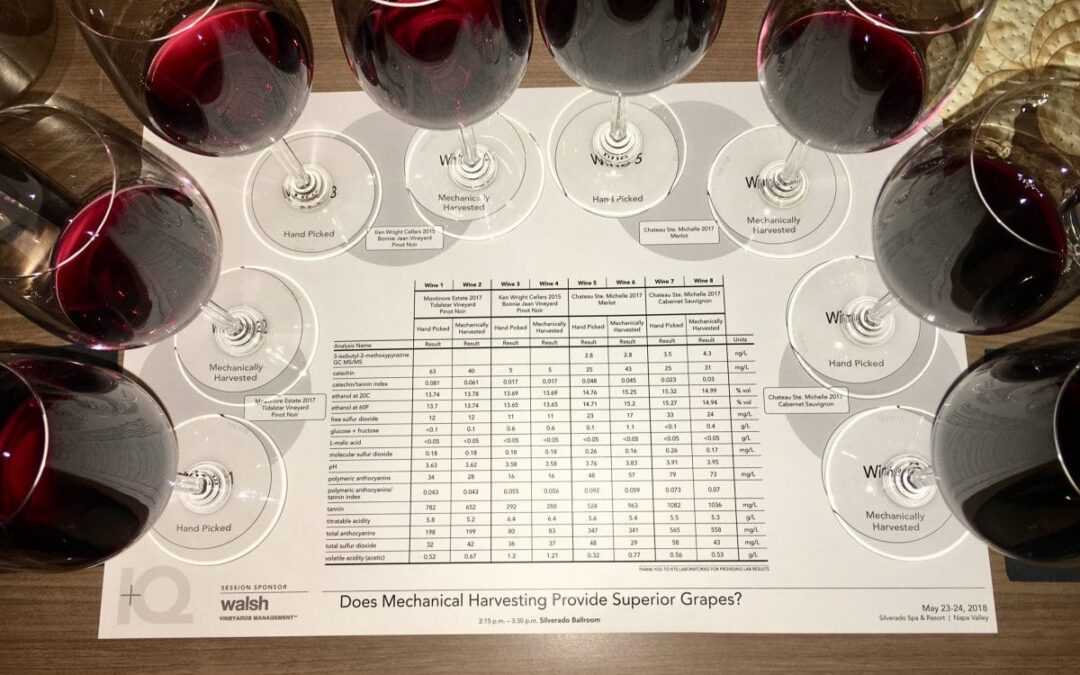
May 30, 2018 | Wine
You love wine.
But maybe you never gave much thought to the science of wine?
Here is a post that reveals some science behind wine…
The preeminent magazine for wine professionals is Wine Business Monthly, headquartered in Sonoma. Last week, I attended their “Innovation and Quality” wine conference at Silverado Resort – which entertained and informed.
Click on this link to go the magazine’s home page: https://www.winebusiness.com
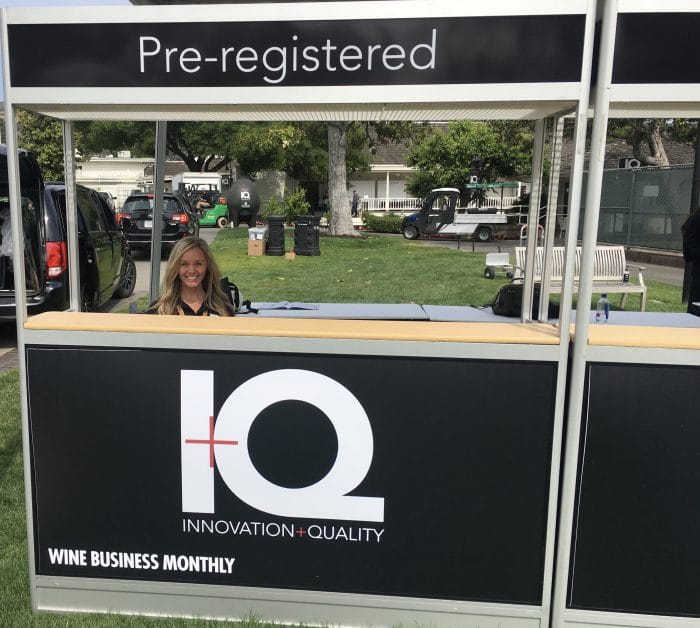
Several really exciting ‘wine tasting trials’ were presented. In this photo you can see the scale of the tasting about to start in the ballroom.
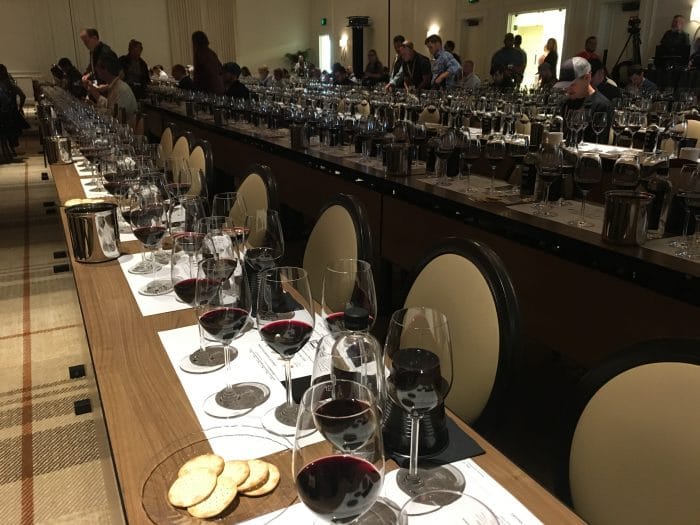
First up, famed Italian wine family Antinori presented a comprehensive Cabernet tasting from their vineyards from around the world.
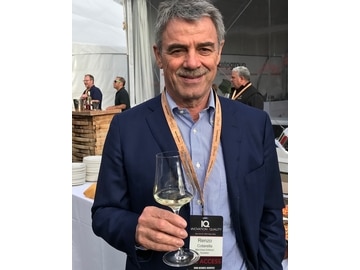
CEO Renzo Cotarella presented. I found him eminently entertaining. He commented “chemistry deconstructs, tasting reconstructs” – meaning chemistry can tell you a good deal about the fractional bits in wine, but only a human being can make the ultimate choice about wine quality. When asked who makes the final blending decisions, he answered, ‘winemaking is not a democracy, someone needs to own the wine’s identity.’
The Antinori tasting (seen below) included Tignanello, Col Solare, Antica, Guado al Tasso, and Haras:
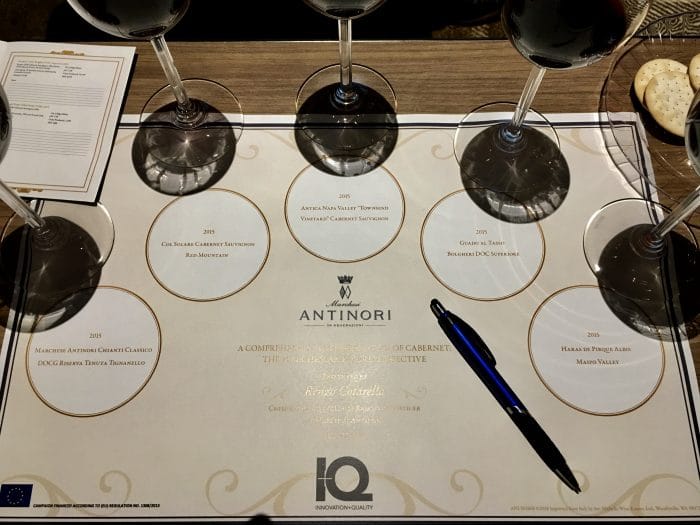
Extensive laboratory testing and results were a major part of the conference. Cara Morrison from Sonoma-Cutrer introduced the audience of 200 wine industry professionals to the world of “phenolics” – what the rest of the world knows as ‘color’ and ‘tannins’. And if you insist on the deeper chemistry – compounds including phenolic acids, stilbenoids, flavonols, dihydroflavonols, anthocyanins, flavanol monomers (catechins) and flavanol polymers (proanthocyanidins)
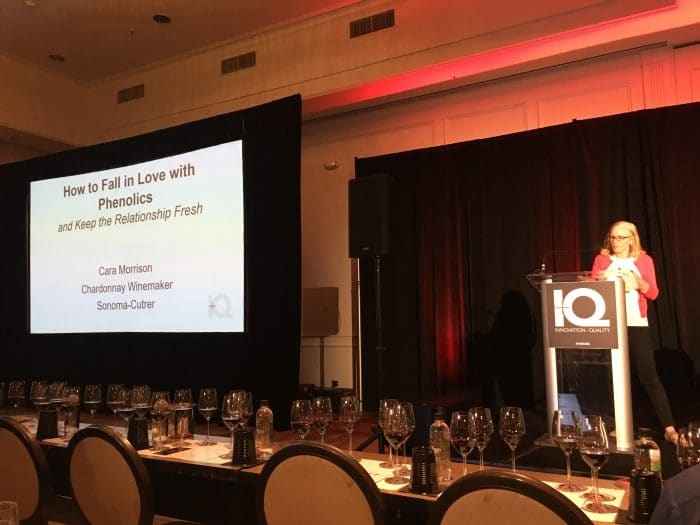
This trial focusing on phenols included lab data from wines from Merryvale and Wente.
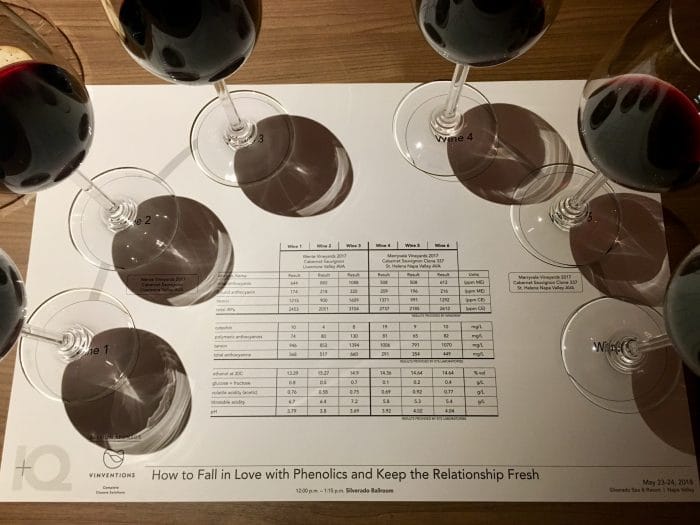
Greg Gambetta, Professor of viticulture at Bordeaux Sciences Agro (graduate school), provided a terrific presentation about phenolics, including this slide showing how a controlled deficit in Nitrogen at Chateau Haut-Brion lead to higher anthocyanin – meaning more color, tannin, and flavonoids.
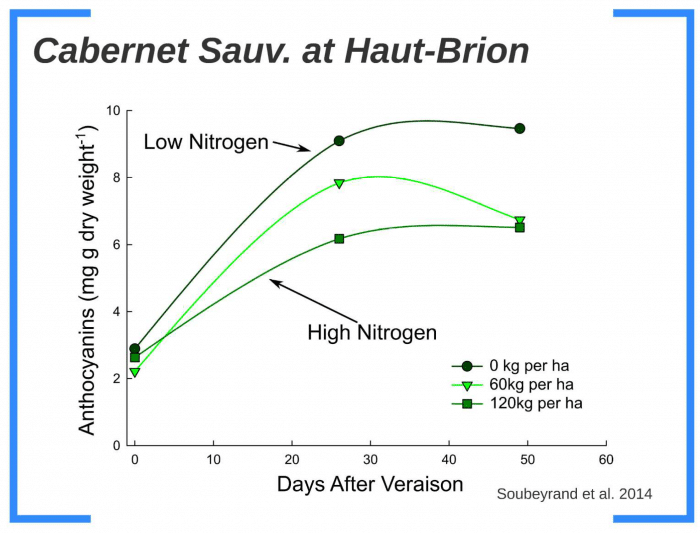
In the third trial, we tasted wines from 4 different wineries from around the west – with the ONLY difference being hand picked versus machine harvested fruit. I have personally been a strong proponent of machine harvesting ever since witnessing the process in Clarksburg, Ca. over a decade ago. Since then, the machines have markedly improved resulting in exceptional fruit quality, very little broken stems and leaves, and a very speedy and cost effective way to get large amounts of fruit to winery fast and in good shape.
Click on this chart below to see the ‘side by side’ chemistry of hand harvested fruit vs. mechanically harvested fruit:
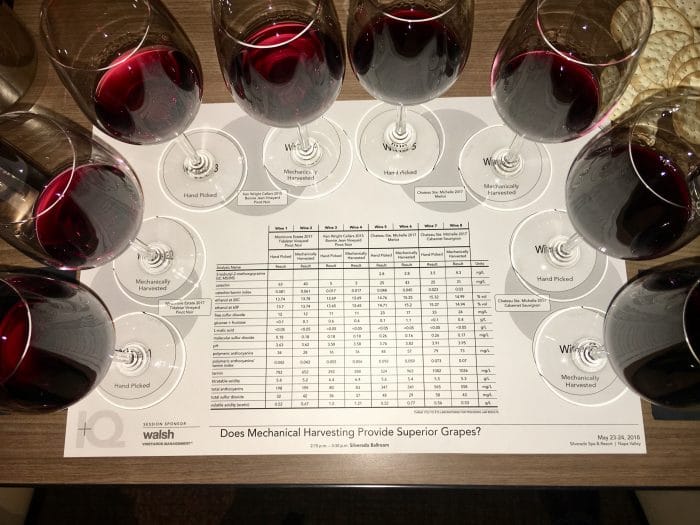
There was also a presentation on smoke taint. Particularly following up from the October 2017 fires in Sonoma and Napa. The chemistry of smoke taint in wine is complicated. And so far, many have tried, but none have really found a way to remove the smoke once it has entered the vineyard and into the skins of the raw fruit.
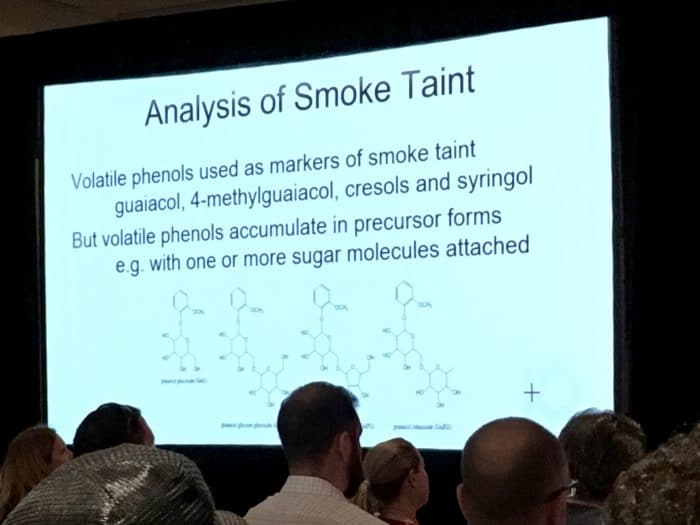
See these links for more on the wines presented at the trials:
Sequoia Grove: http://www.sequoiagrove.com
Ramey: http://www.rameywine.com
Mondavi: https://www.robertmondaviwinery.com
Sonoma-Cutrer: https://www.sonomacutrer.com
Merryvale: https://www.merryvale.com
Wente: https://wentevineyards.com
Coppola: https://www.francisfordcoppolawinery.com
Chateau St. Michelle: https://www.ste-michelle.com
Montinore: https://www.montinore.com
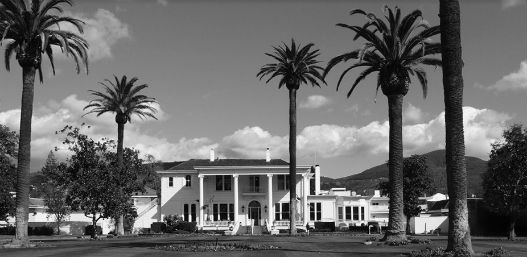
Silverado Resort was, as always, perfect: https://www.silveradoresort.com
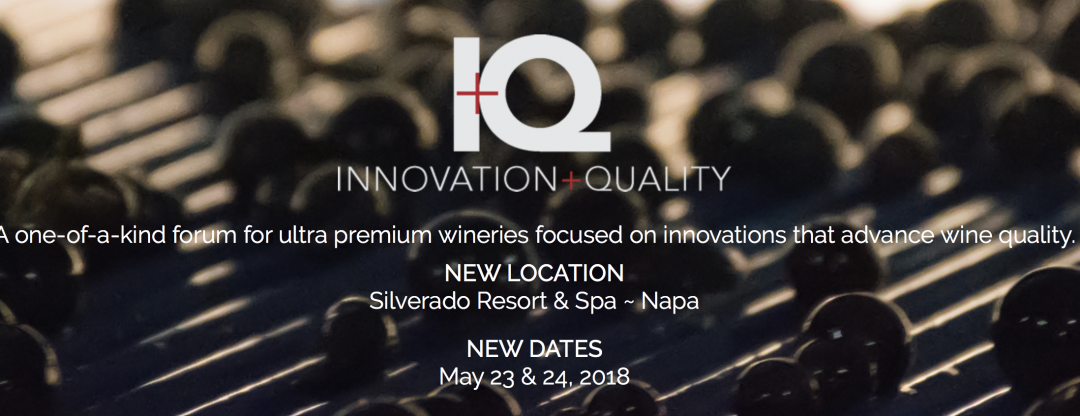
May 14, 2018 | Wine
On May 23rd and 24th, Wine Business Monthly will be hosting their one-of-a-kind forum for ultra premium wineries focused on Innovations that Advance Wine Quality. Located at the Silverado Resort, the industry’s foremost wineries and researchers will be gathering to share insights and data…

To review the entire schedule including speakers, sessions, research, and tastings, click here:
http://www.winebusinessiq.com/attendees/#session-overview
To register, click here:
http://www.winebusinessiq.com/attendees/#ticket-options
There will be some incredibly insightful topics presented including…
- A Comprehensive Interpretation of Cabernet: The Marchesi Antinori Perspective
- How to Fall in Love with Phenolics and Keep the Relationship Fresh
- The Evolving Role of Oxygen in Fermentation Processes and Why Should We Care?
- Does Mechanical Harvesting Provide Superior Grapes?
And these wine tasting trials:
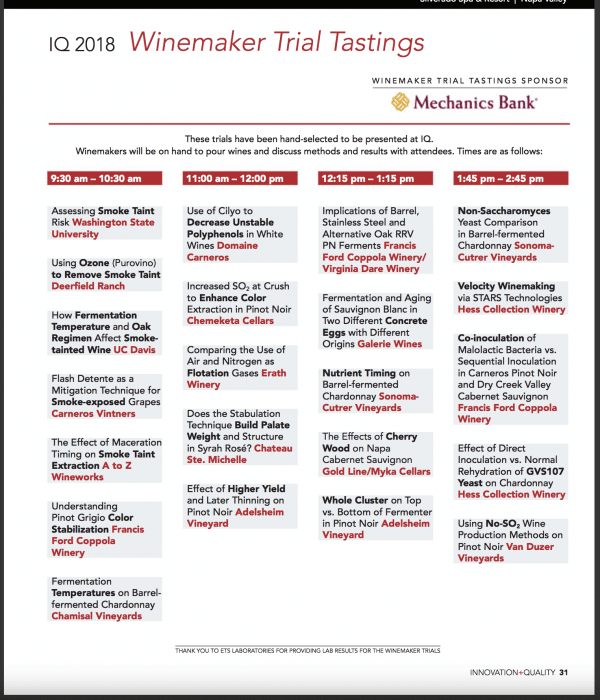
And for those of you who cannot attend, or are not in the industry but enjoy wine, I think you will find a cruise through the web pages of Wine Business Monthly to be fascinating and informative:
https://www.winebusiness.com/wbm/
Passes are available to the personnel and proprietors of wineries, grape growers and vineyard management companies.
See you there!
Ken Wornick, Hydeout Sonoma Consulting
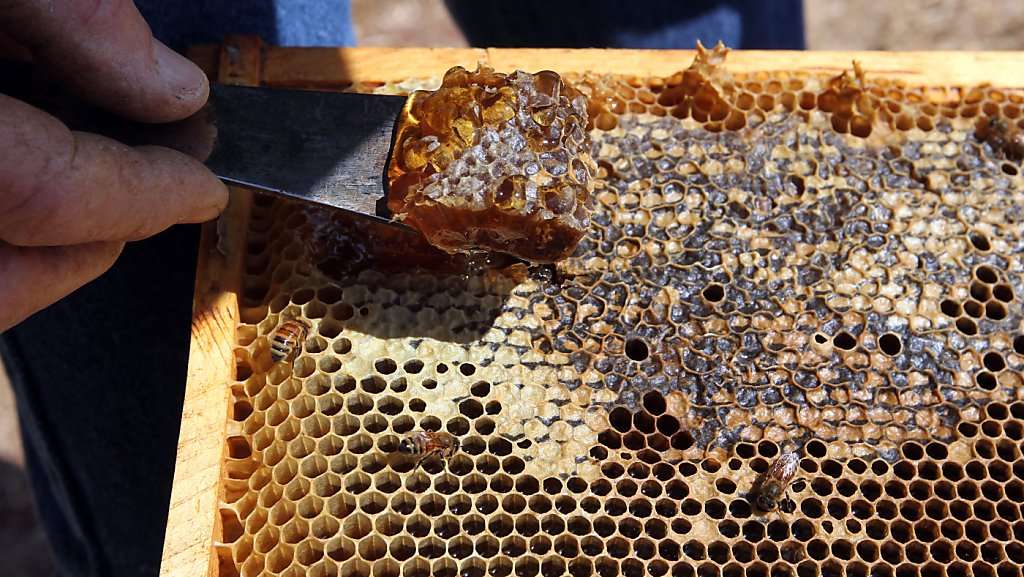
May 6, 2018 | Wine
My motorcycle buddy and all-around renaissance man, Nicholas Freedman, hosted a very special lunch and ‘bee hive dive’ at his east-Petaluma ranch, benefiting the Sonoma Academy. Many bee experts, aficionados, interested parties, and Sonoma Academy supporters enjoyed a wonderful day of food and learning…
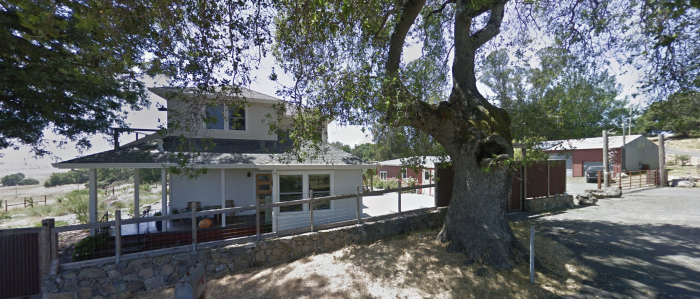
Nick’s ranch on Hardin Lane in the hills east of Petaluma – once ranched by General Vallejo, there is evidence on the moss-covered rocks of Chinese workers from the 1800’s, a small farmhouse was built in the 1920’s, later it was part of a 100-acre chicken ranch that failed when Hardin died, and in the 1950’s the Rocca family built the main house and ran cattle for 70 years. Now in Nick’s hands, he is slowly bringing the buildings and grounds back to life, including the 1840-1880 chicken coops.
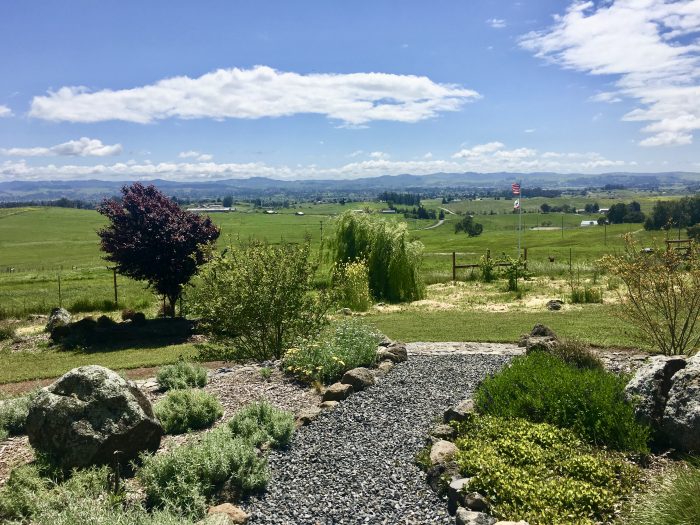
The view from Nick’s Ranch looking west toward Petaluma.
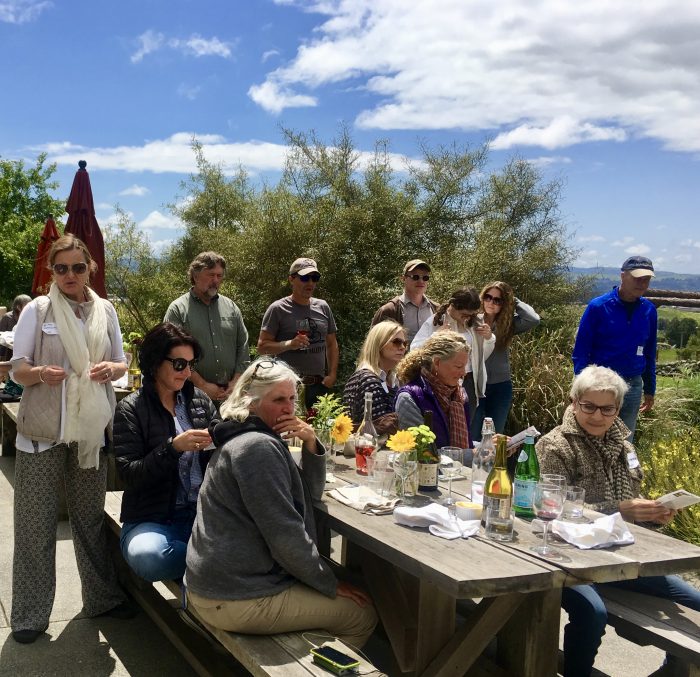
When we first got going, it was a bit foggy and cold that Sunday morning and the mostly Sonoma Academy crowd was just waking up. But the “Bees Knees” cocktails (recipe follows here) was one of the best we all had in a long time, just delicious, and then the sun came out…
Bees Knee’s Cocktail – gin, lemon juice, honey syrup
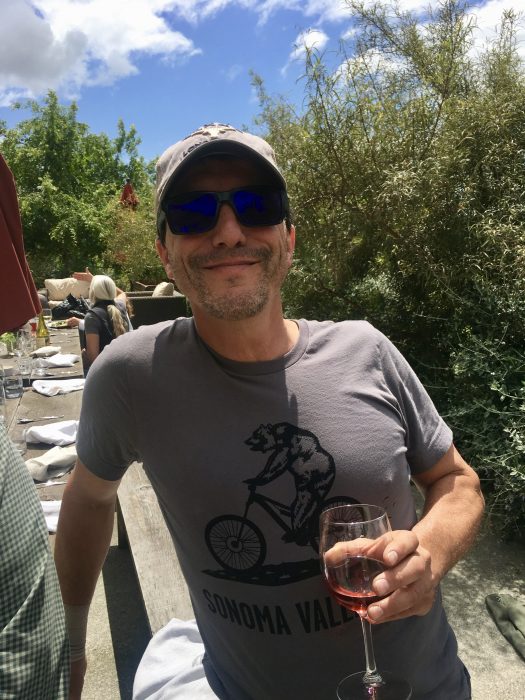
After brunch, our host Nick switched from Bees Knees cocktails to Bee’s Knee’s Rose’ and delivered a fascinating history on wine country bees, various sources of bees (both good and not so good), their diet, risks to the hives, and stories about catching wild swarms. If you see a wild swarm, click here:
Saving a wild swarm of bees
And report a swarm here: http://www.sonomabees.org/report-a-swarm/
Nick also wanted you all to see this amazing story of a local Petaluma bee keeper…
http://www.petaluma360.com/entertainment/5804041-181/beekeeping-gives-blind-petaluma-woman
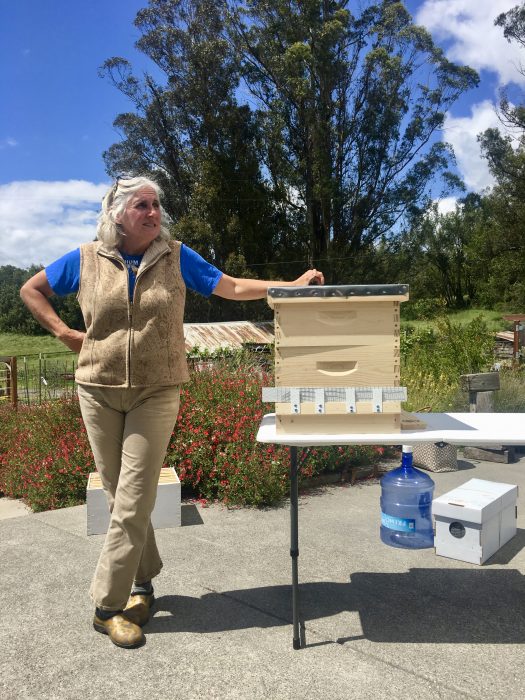
Christine Kurtz, the renowned “Petaluma Bee Lady” gave us an in-depth seminar on bee behavior and bee keeping. Sadly, she later reported having to euthanize some of her hives because of vandalism. What an outrage.
Contact Christine here:
pe*************@ya***.com
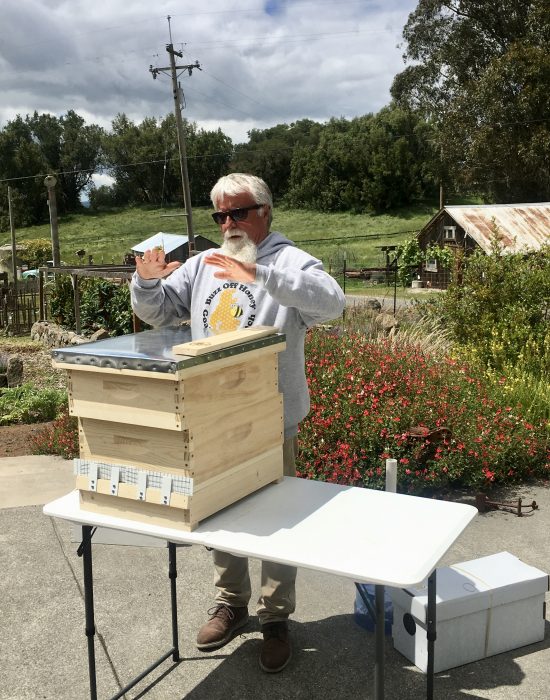
Then John McGinnis jumped in. His place is just uphill from Nick’s, is called ‘Goah Way Ranch’ and his company, ‘Buzz Off Honey’, and John hand-produces quite exquisite custom bee hives as seen above.
https://www.goahwayranch.com
For all things Sonoma Bee related, click here: http://www.sonomabees.org
Then it was time to suit up…
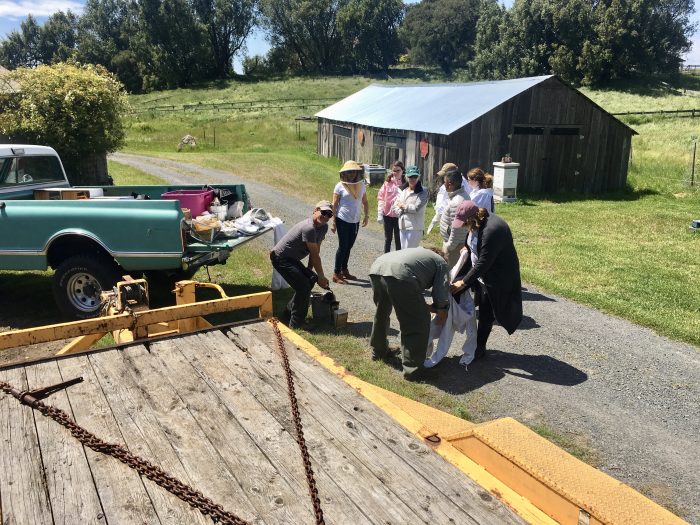
And ‘dive’ into the hives…
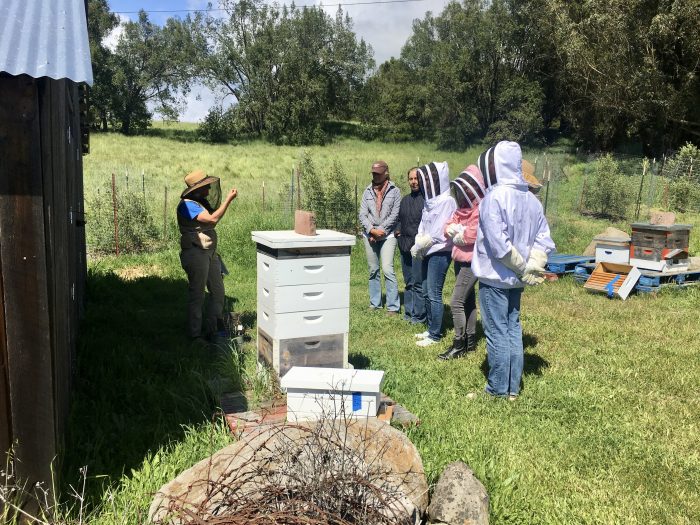
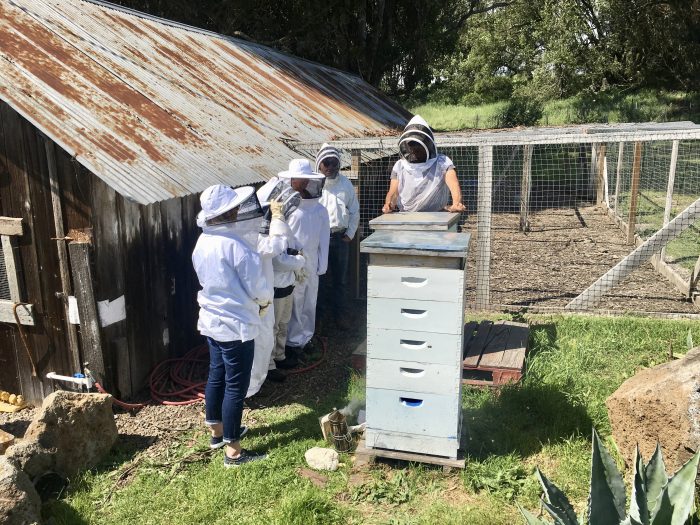
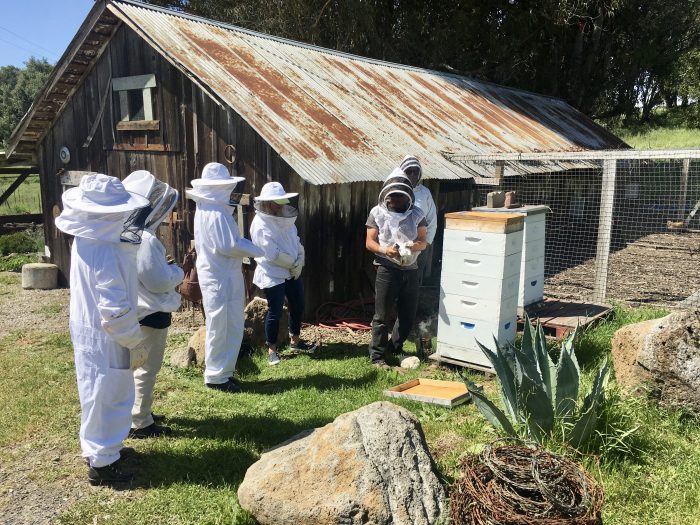
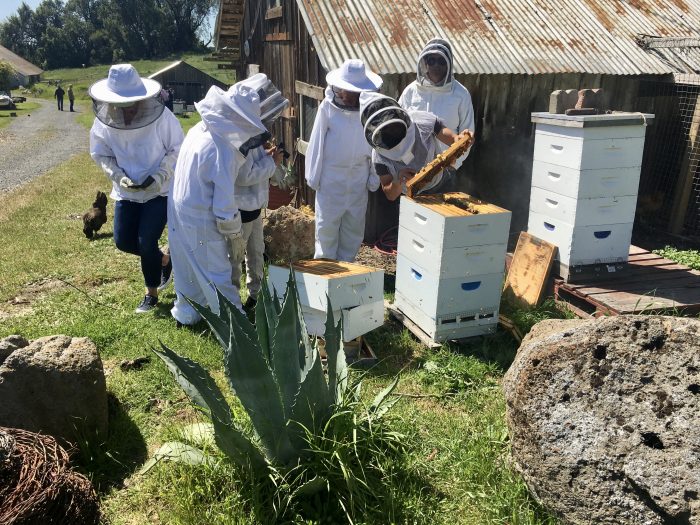
Some of the grading and plantings that keep the bees happy…
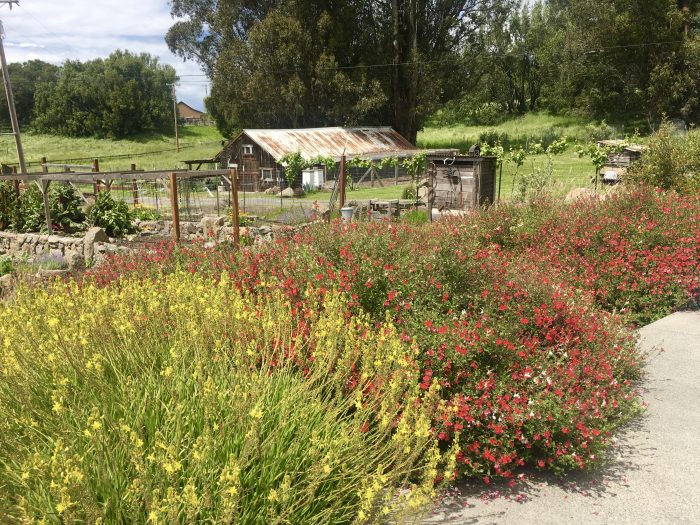 \
\
Nick pumps some water from his natural surface aquifer to build up the garden flora.
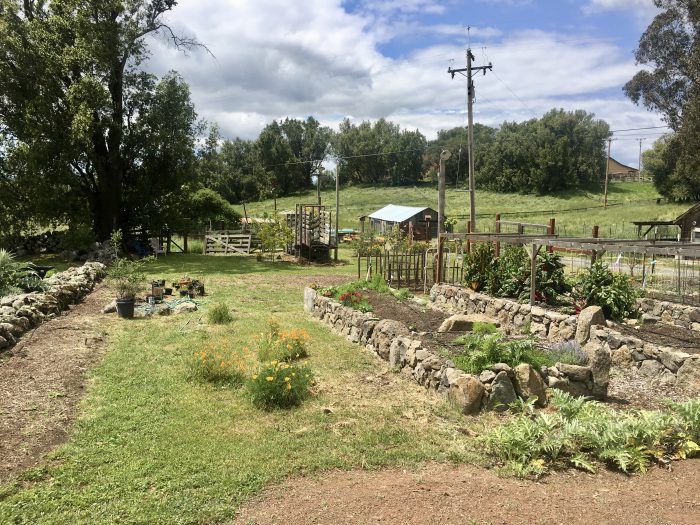
And is resurrecting old walls and beds.
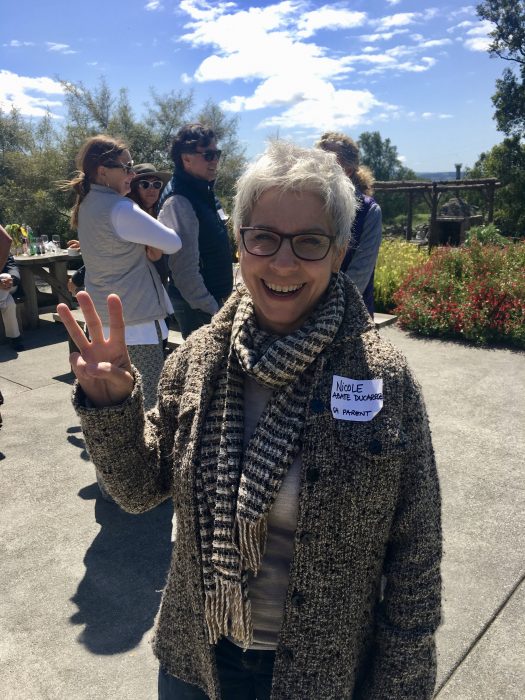
My new best friend, Nicole Abate Ducarroz, active Sonoma community member, champion for education and public schools, long-standing board member of Sonoma Academy, and past president of the Sonoma Valley School Board.
Thanks for reading. Please share this blog with your friends. Ken
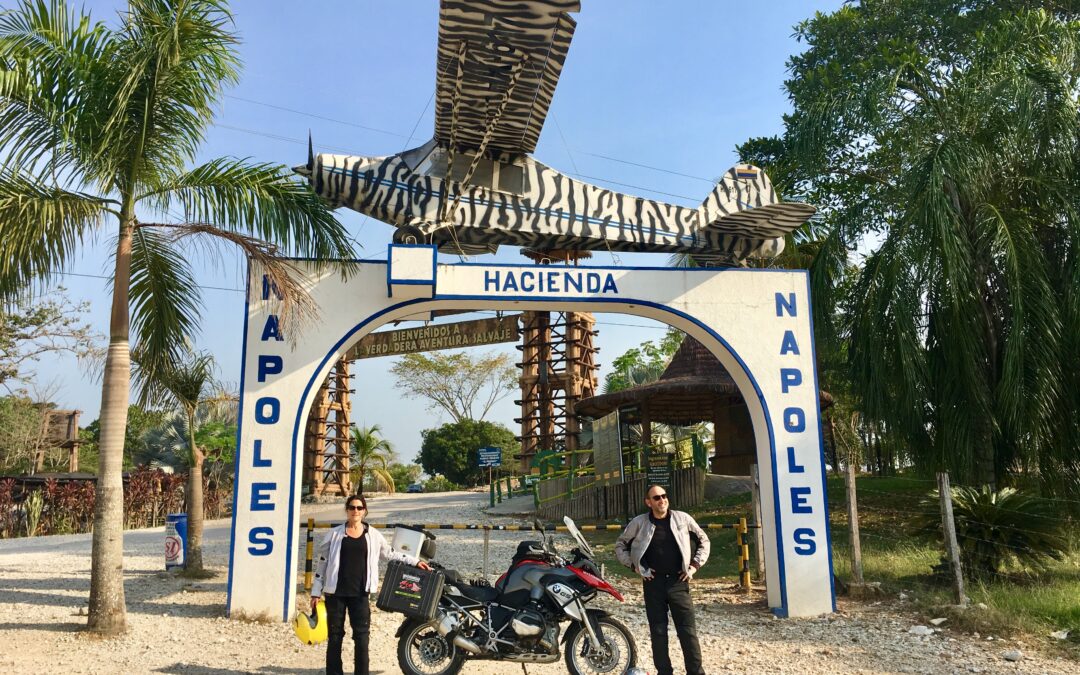
Apr 22, 2018 | Wine
On our motorcycle tour through the central Andes of Columbia, we discovered this winery, the Marques de Villa De Leyva…
This is the road with a first glimpse of grapevines as we approached the ranch. Could be anywhere in wine country, right? And yet here we are on the Equator.
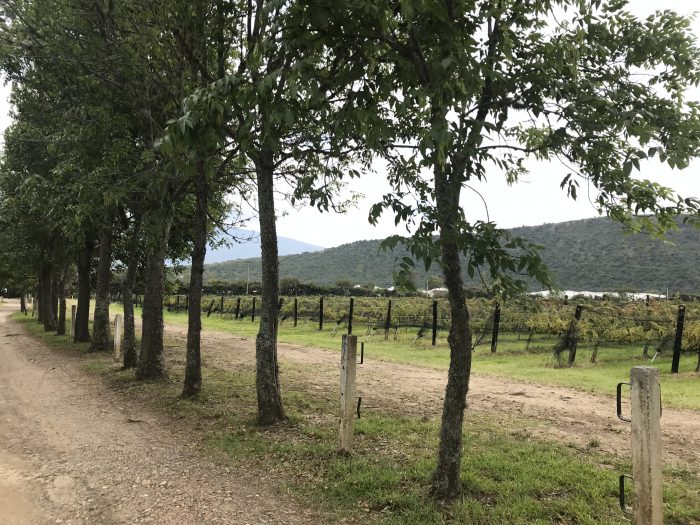
This is the guard shack entrance, but it was quiet and closed that day.
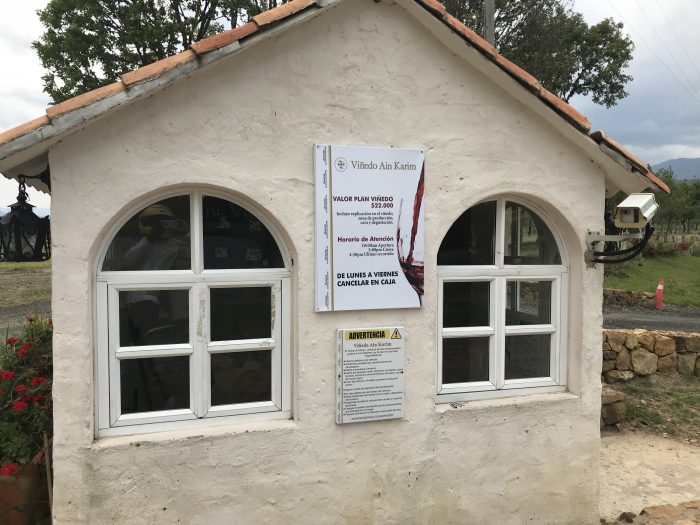
Page one of two explaining the origins of the winery. The founder, Mr. Pablo Toro, studied enology at UC Davis, yet was spellbound by the vineyards of Israel, and so he named his project “Viñedo Ain Karim” meaning “No tears” in Hebrew. And he named the winery, Marques Villa De Leyva, after the close-by ancient town famous for the largest cobblestone square in Colombia.
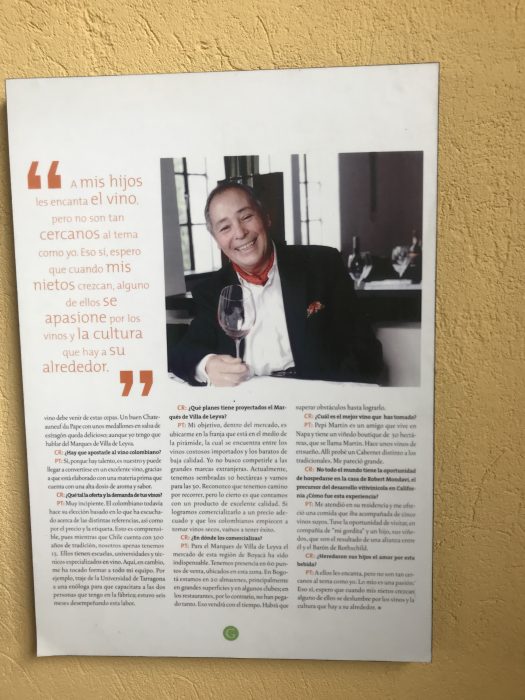
Page two
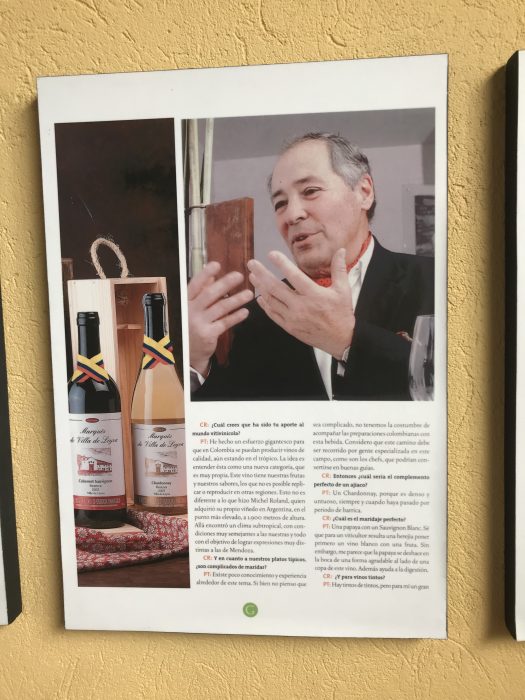
The nearby town of Villa De Leyva, a wonderful artist-focussed village about 4 hours from Bogota. Located away from major trade routes in a high altitude valley of semi-desert terrain, and with no mineral deposits nearby to exploit, the town has undergone little development in the last 400 years. As a consequence, it is one of the few towns in Colombia to have preserved much of its original colonial style and architecture: the streets and large central plaza are still paved with cobblestones, and many buildings date from the sixteenth century.
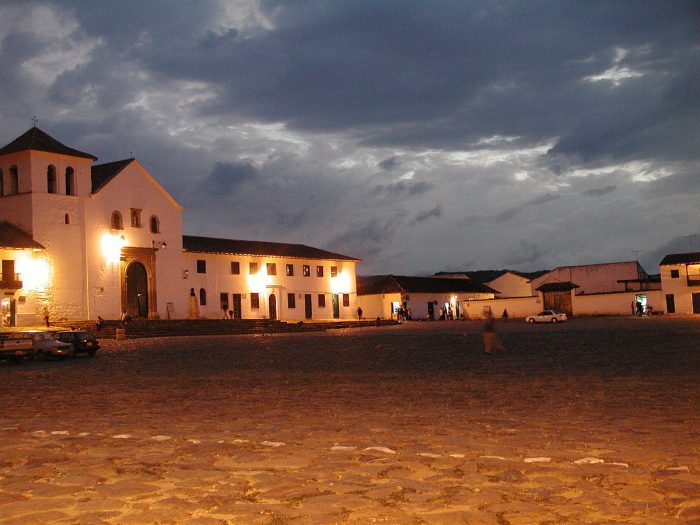
High quality steel tanks filled the modern 5,000 case capacity fermentation room.
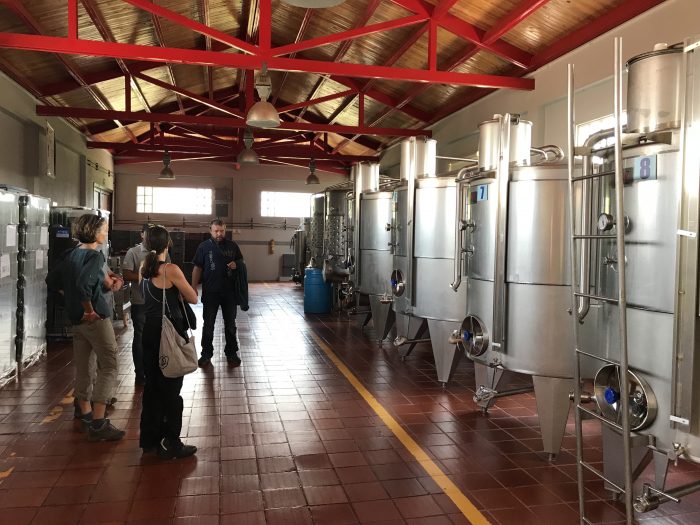
Incredibly, they dug a basement during construction and formed a traditional cave and barrel room.
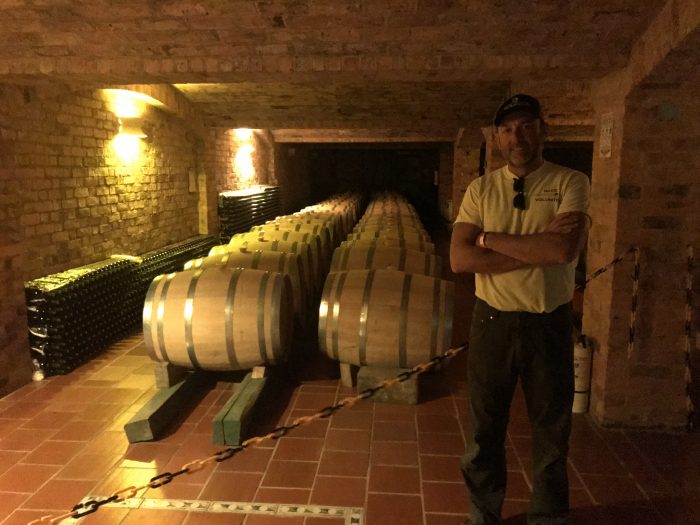
They offered a wide range of wines that were surprisingly delicious.
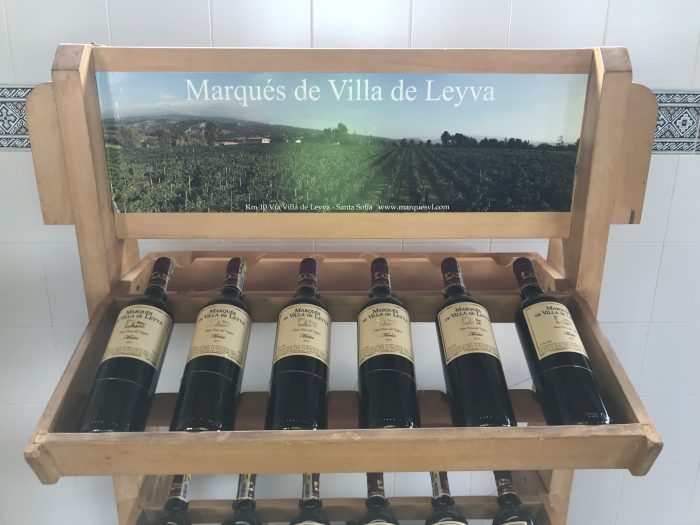
But it was the French varieties with traditional canopies and training methods that really surprised.
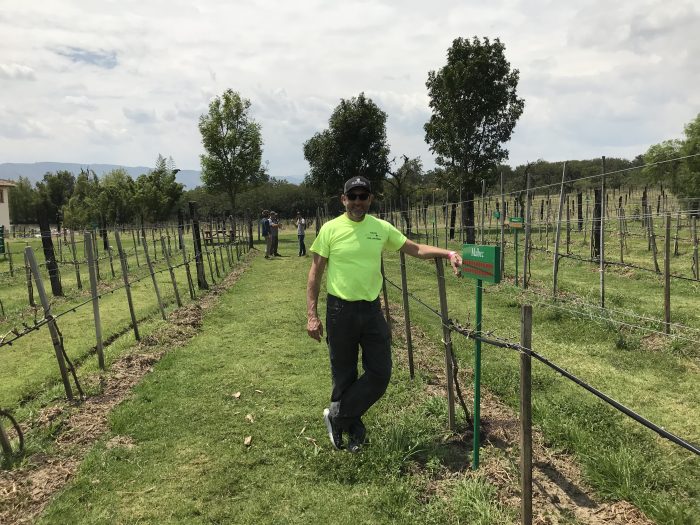
Even though the vineyard is at an elevation of 7,000 feet, it is often hot and definitely humid most of the year. So every pruning wound must be sealed to prevent disease. And, at the equator, there is essentially 12 hours of day and night all year, with no temperature variation. So they must ‘induce’ the seasons – fall leaf drop, winter dormancy, and spring bud break? How do they do that? Simply put, they ‘force’ the seasons onto the vines.
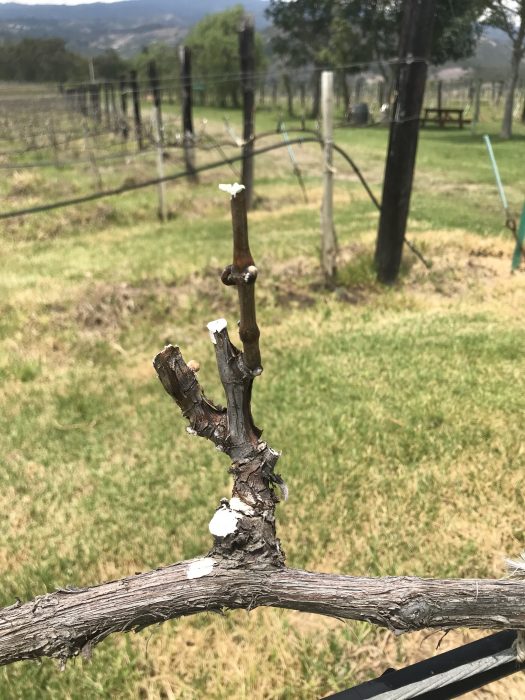
Their vineyard signage indicates they are farming according to the standard Mediterranean seasonal changes…
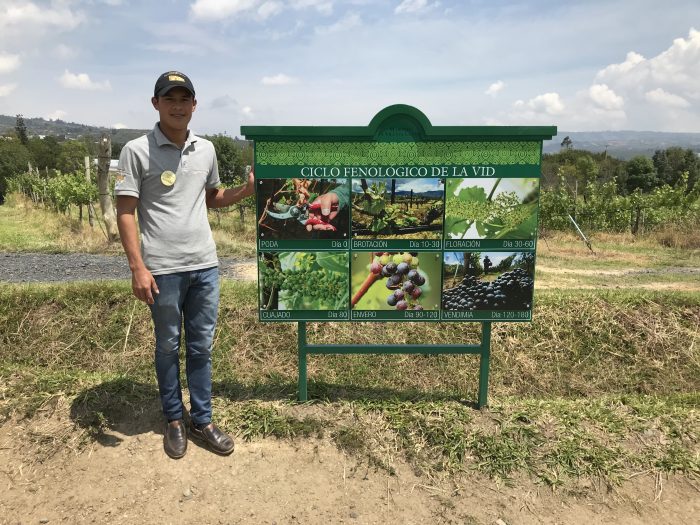
The tasting experience was also pretty traditional. The grounds were beautiful and the staff was great, just like in Sonoma.
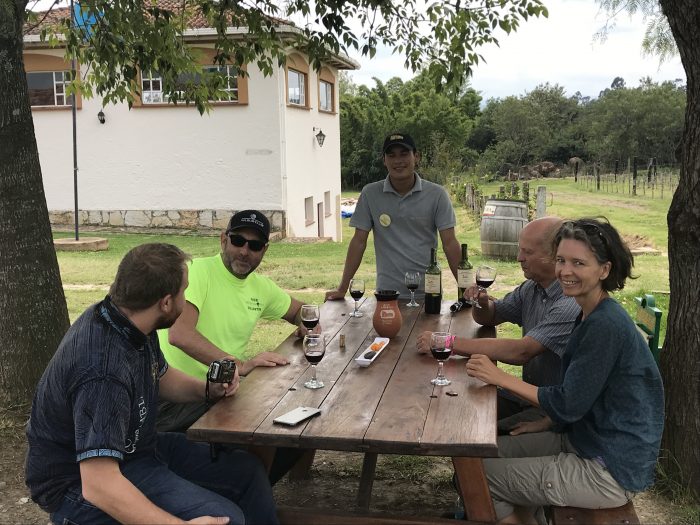
After the tour, we road back into town and found some traditional Colombian coffee – always light in color, low in caffeine, but very aromatic. That is how they drink it all day long. You can hardly find an espresso anywhere…
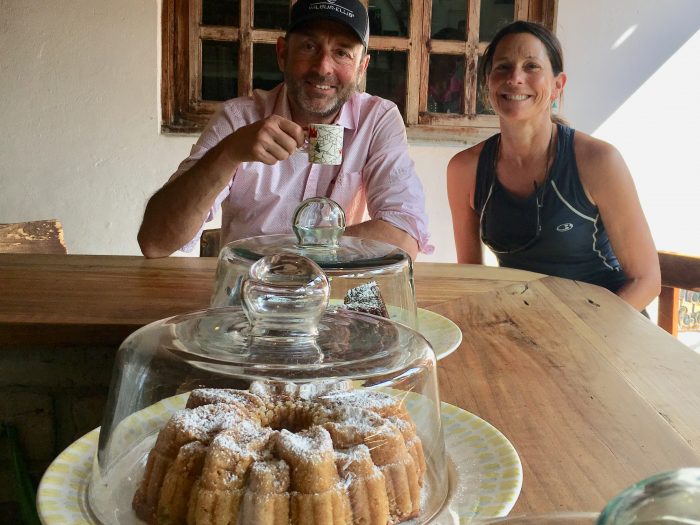
Them we loaded up again and got ready to ride into the eastern Andes of Colombia.
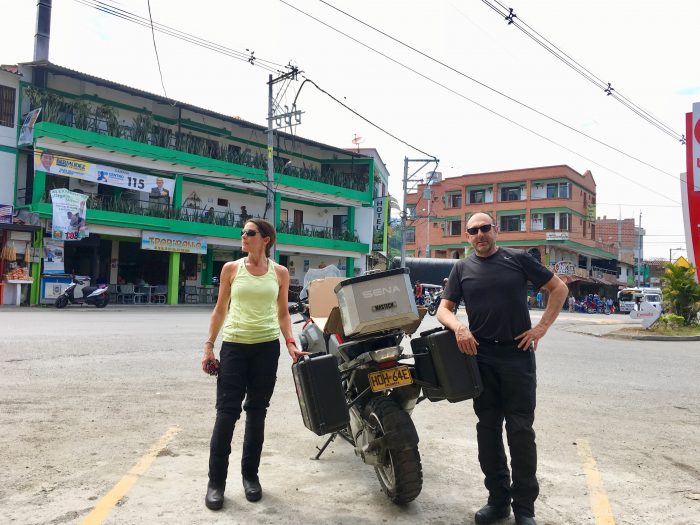
Our next stop was the 12-day long “Running of the Fish” festival, the Subienda, in the town of Honda. Honda takes its name from the Ondaimas, the indigenous people that inhabited the banks of the Magdalena river and the region where the city lies today. Honda is called “the City of Bridges” with more than 40 of them on the rivers Magdalena, Gualí, Guarinó, and Quebrada Seca. It is also called the “City of Peace” as it escaped most of the violence of the 1950s. The local outdoor food and music was a ton of fun.
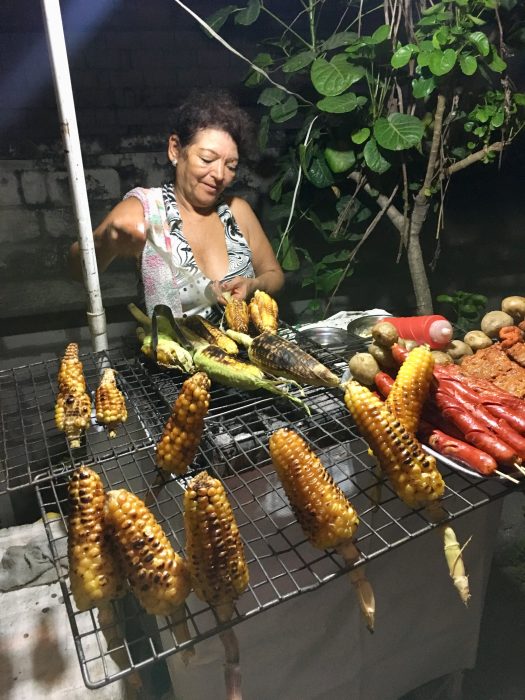
The following day, we visited the El Ocaso coffee farm, or plantation known as a Finca. These are raw green coffee beans not yet ready for harvest.
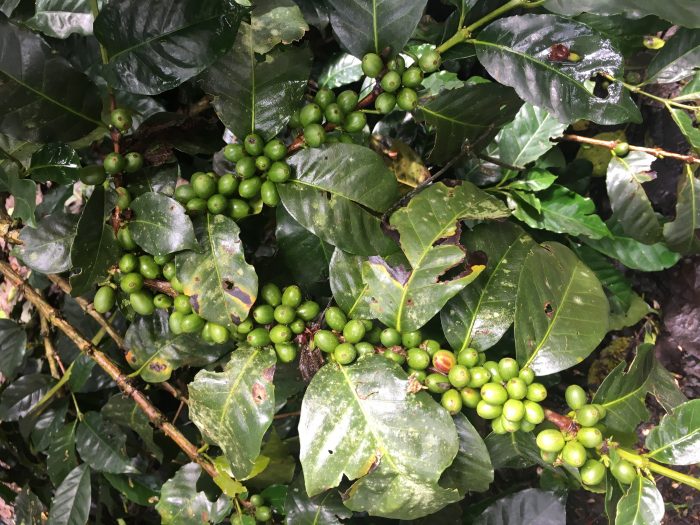
The red ones here are ready to be picked. Just like grapes, some such as these are carefully picked by hand, and make better coffee, whereas other farms use mechanical harvesting to supply the world with it’s endless demand for coffee.
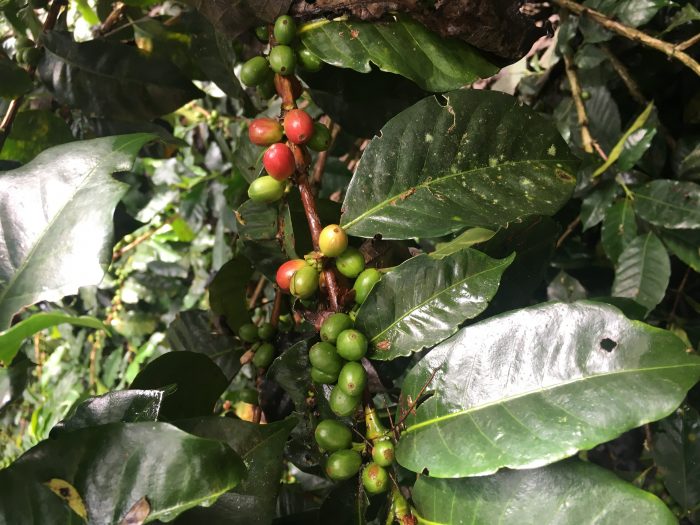
Here again, a good sign explains the season of the coffee bean.
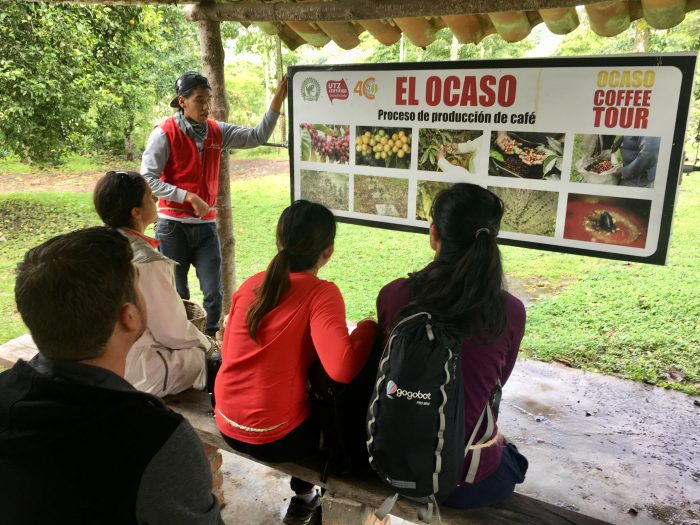
The hand-operated coffee bean crusher, just like the ones for grapes back in the 1940’s.
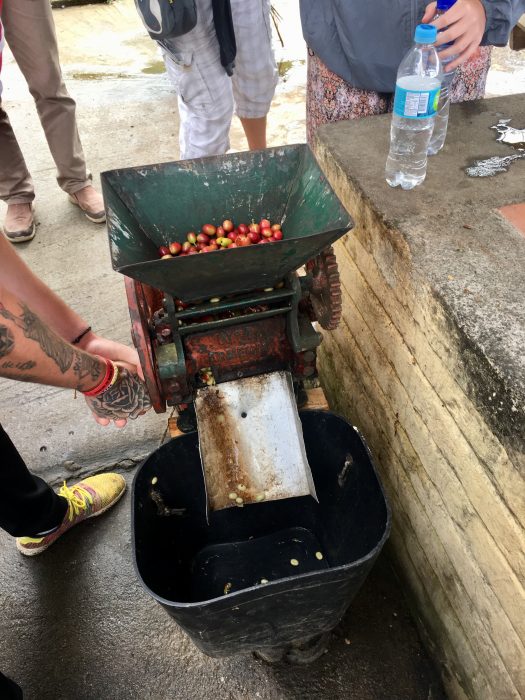
Finished beans in various forms. The big surprise? Colombians like to drink coffee all day, and they drink it very light and mild with low levels of caffeine.
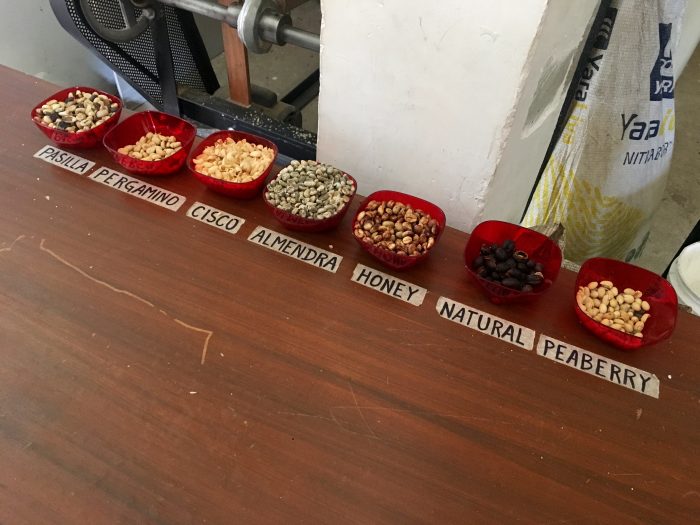
A fun sign at the Finca indicating how far we were from San Francisco! And other places around the world.
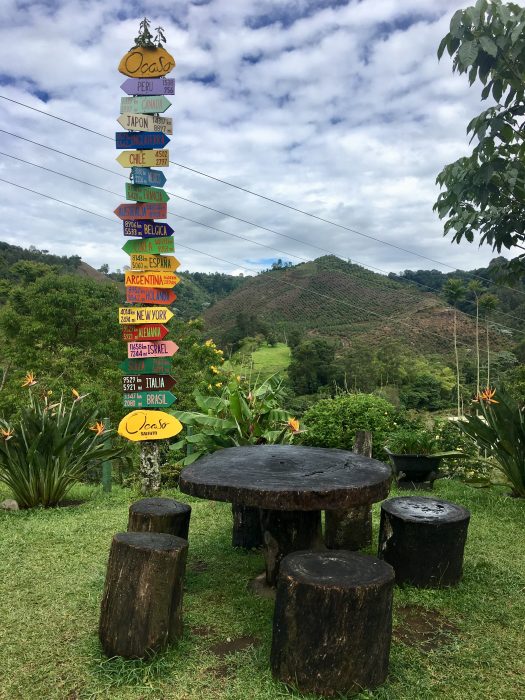
And this photo? It is the entrance to famed cocaine narco-trafficer Pablo Escobar’s ranch, and the original airplane that flew into Texas. The place is now an animal amusement park. But that didn’t;’t stop us form shooting this photo. Colombianos are anxious to move past these old days.
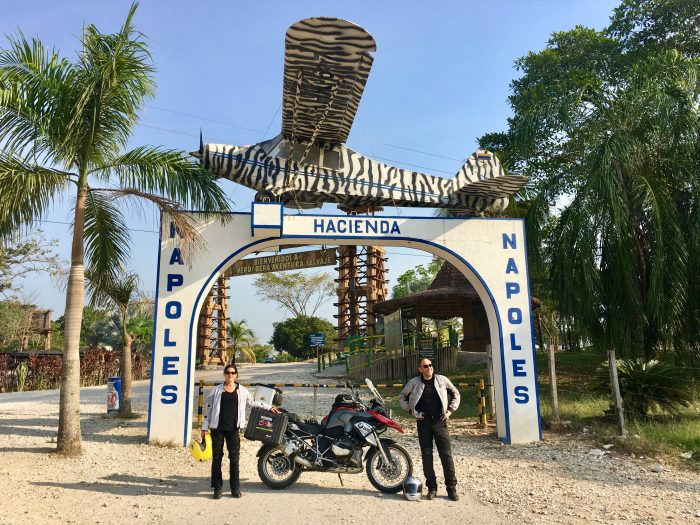
Thanks for reading. Next post in a couple of weeks. Ken










































 \
\























